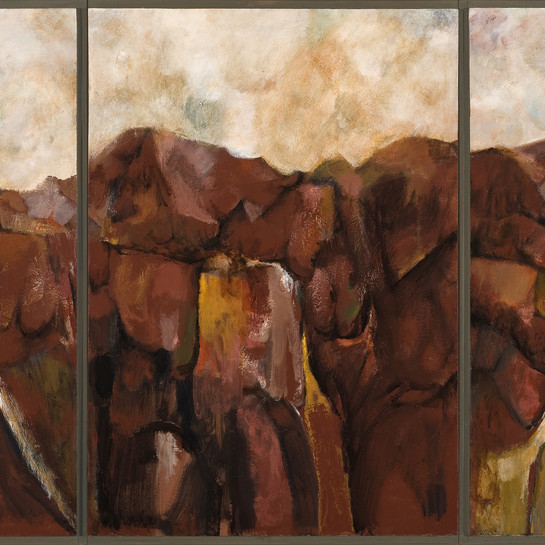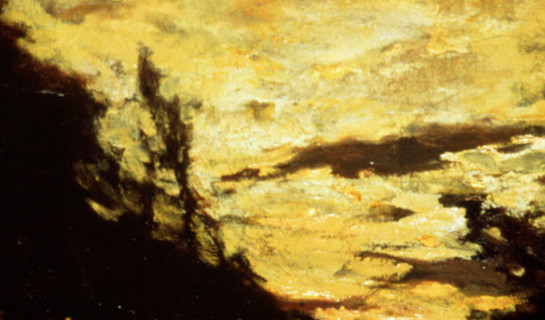Grace Butler
Aotearoa New Zealand, b.1886, d.1962
Summertime, Arthur’s Pass
- 1945
- Oil on canvas
- Presented by Mrs Harwick, 1945
- 600 x 700mm
- 69/158
- View on google maps
Tags: landscapes (representations), mountains, natural landscapes, trees
'Arthur’s Pass is a special birding area because of the preponderance of southern rātā [a forest tree with bright red flowers]. The nectar from the rātā was particularly attractive to kākā not just kea [two species of native parrots], so for hunting kākā it was a major zone. At Christmas the western side of the pass, as you’re dropping down into Otira, is often full of brilliant red rātā blossoms. It was a big mahika kai [food gathering area] up to the head of the valley towards Otira, although the route across was not a regular nor a favoured route. It was regarded as a possible route, and the rakatira [chief] Tarapuhi gave that information to Dobson [Sir Arthur Dudley Dobson, a pioneer surveyor who came to New Zealand in 1850 and took the first Europeans over Arthur’s Pass] but even then they had to develop the whole corkscrew thing [the switchback road winding down steep scree slopes] to get carriages across it – on foot it was pretty difficult. That difficulty has been overcome by the new viaduct.' —Sir Tipene O’Regan
(He Rau Maharataka Whenua: A Memory of Land, 17 September 2016 – 18 February 2017)
Exhibition History
Van der Velden: Otira, 11 February – 22 February 2011
Grace Butler first visited the Arthur’s Pass/Otira region in 1916 and was immediately captivated by the alpine landscape. In 1923 she and her husband Guy purchased Jack’s Hut, a roadman’s hut near the summit of Arthur’s Pass that provided a base from which she could explore and paint the region on a regular basis. 'Summertime, Arthur’s Pass' features the steep slopes of Mount Rolleston, which dominates the Arthur’s Pass/Otira region, and the view is likely to have been taken from near Jack’s Hut.
Arthur’s Pass is a mountain region in the Southern Alps, approximately two hours drive from Christchurch. This work features Mt Rolleston, but Grace Butler painted many studies of the area. With its crispness of light and natural colour, this work is in the landscape style of the Canterbury tradition. Working outdoors directly before the subject, Butler used loose broad brushstrokes, creating a lively scene. For winter scenes she would stand in the snow, sometimes on covered heated stones.
Butler (née Cumming) was born in Invercargill. The family moved to Norsewood and she attended Napier Art School in 1903, becoming a student teacher in 1907. In 1910 she moved to Christchurch to attend the Canterbury College School of Art. Butler began exhibiting at the Auckland Society of Arts in 1914, and at the Canterbury Society of Arts in 1915. As well as regular New Zealand exhibitions, her work was included in the 1924 ‘British Empire Exhibition’ and the 1951 Festival of Britain. (Opening Gallery hang, May 2003)






